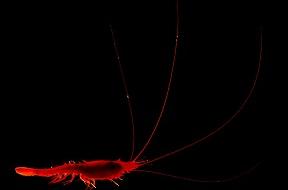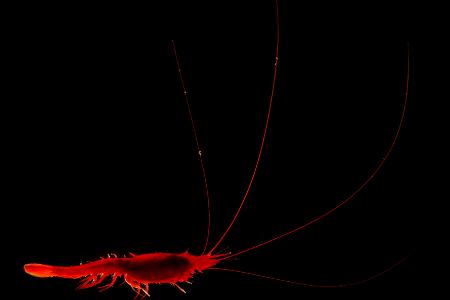This finding, in which the University of Oviedo took part, implies a much more significant role for marine fauna in transporting carbon from the upper layers to areas deeper than 1000 metres
A study by the Malaspina Circumnavigation Expedition, in collaboration with the University of Oviedo and led by the University of Las Palmas de Gran Canaria, has discovered that the biomass of animals in the deep ocean is much greater than previously estimated and plays a fundamental role in the capture of CO2.Animals that feed at night in the upper productive layers of the oceans migrate to deeper layers during the day, transferring energy and organic matter to the meso- and bathypelagic populations. These flows represent a marine ally in the fight against climate change, as they have brought about carbon sequestration in the ocean for hundreds of years. The finding therefore implies a much more important role for marine fauna in the transportation of carbon, and suggests options for improving carbon sequestration in the ocean to mitigate climate change.
The leading signatory to the article that provides details of the research - published in the journal "Nature Communications" - was Santiago Hernández-León, professor at the University of Las Palmas de Gran Canaria. Professor José Luis Acuña from the University of Oviedo's Department of Organisms and Systems Biology also participated.
A hypothesis for the process that has been studied by the research staff was made over 60 years ago by Russian marine biologist Mikhail E Vinogradov, who called it the ocean's "migration ladder". However, the lack of data on deep-sea pelagic creatures meant that this hypothesis could not be tested until the publication of this paper, half a century later.
The organic carbon produced by photosynthesis in the ocean's illuminated zone that is not consumed sediments to the so-called mesopelagic zone (200-1000m deep), where it remains for decades. The carbon that settles in the deep ocean below 1000m, meanwhile, remains sequestered for hundreds of years. The transport mechanism is the so-called biological pump that transports organic carbon.
In addition to the carbon that sediments passively due to the action of gravity, the vertical migrations of creatures that feed at night in shallower layers and take refuge in deeper layers during the day (primarily small crustaceans, fish and cephalopods) transport carbon they have ingested in the ocean's upper metres down to the deep zone, thus creating the so-called active flow.
The Malaspina Expedition set out to quantify for the first time on a global scale the zooplankton biomass from the surface down to 3000-4000 metres with the aim of estimating the active carbon flow, and supplementing these data with the limited data available in the literature. The conclusions from this project show that primary production in the upper illuminated layer determines the zooplankton biomass within the surface, meso- (200-1000m) and bathypelagic (1000-4000m) layers of the ocean, using estimates derived from networks as well as acoustic methods at 146 oceanographic stations located around the tropical and subtropical ocean.




